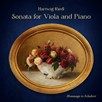
Divertimento
Composer: Svend S. Schultz
Instrument: Wind Octet
Level: Advanced
Published: 2016
Price: €40.00
Item details
-
Description +
-
Edited by Dustin Barr
Duration: 8’30"
Set in four contrasting movements, Schultz’s Divertimento for Wind Instruments is a neo-classical homage to the eighteenth century wind serenades and partitas of composers like Mozart, Haydn, Krommer, and Beethoven. Works of this type were often, though not exclusively, scored for an octet of oboes, clarinets, horns, and bassoons and were a common form of courtly entertainment during the Classical Era. Schultz’s work joins Emil Hartmann’s Serenade, op. 43 and Asger Lund Christiansen’s Octet, op. 34 as examples of significant contributions to this genre by Danish composers. Though an entirely well crafted and serious composition, Schultz’s octet freely embraces moments of lightheartedness and humor common in Classical works bearing the same “divertimento” title.
Despite the work’s high artistic merit, it remains largely unknown to wind players and conductors today. This is surprising on two accounts. First, it is prominently listed as one of the top 101 works for chamber wind ensembles in An Annotated Guide to Wind Chamber Music (ISBN 0-7579-2401-8) by Rodney Winther, former Director of Wind Studies at the Cincinnati Conservatory of Music. Secondly, the Danish Wind Octet released a suburb recording of the work on their 1994 album (8.224002 Dacapo Records). With these resources already in existence, I believe the Divertimento’s relative obscurity is due solely to its previous lack of publication and availability. With this new edition, it is my hope that many more players and audiences will get to enjoy this worthy addition to the wind chamber music repertoire.
Dustin Barr, D.M.A.
Assistant Director of Bands
Michigan State University, USA
-
-
Instrumentation +
-
Wind Octet:
2 Oboes
2 Clarinets
2 Horns
2 Bassoons
-
-
About the composer +
-
Svend S. Schultz was born and raised in Nykøbing Falster where he received his first piano lessons and later graduated from upper secondary school in 1933. He entered the Royal Danish Academy of music the same year, with piano as his principal subject, where he was greatly influenced by his studies in orchestration and composition with Poul Schierbeck. While at the Danish Academy, The Young Tone Artists Society performed many of Schultz’s early works and he held his own composition recital immediately following his graduation in 1938.
During the subsequent years, Schultz worked as a music teacher and, in 1942-49, as a music critic for the Danish newspaper Politiken. Moreover, he distinguished himself as an influential choral director. In 1949, he was appointed conductor and instructor of The Danish National Radio Choir, a position he held for over 30 years. Under his tutelage, the choir was highly praised for their presentations of both classic and modern literature. Schultz’s high standards for vocal timbre and diction became the model for amateur choirs through the nation.
As a composer, Svend S. Schultz is particularly known for his choral works and his arrangements of Danish songs. He also enjoyed a great deal of success as an opera composer. His one-act opera Bryllupsreise (1951) was given an extensive concert tour and his opera Høst (1950) received a televised broadcast. Schultz was lesser known for his many instrumental works (e.g. five symphonies and ten string quartets), of which only a few were published and almost none are available in modern recordings.
-
-
Credits +
-
Front Cover graphics and layout: Gaia Gomes
Editor: Dustin Barr Engraving: Ary Golomb
Printed in Copenhagen, Denmark
Copyright © Edition SVITZER
www.editionsvitzer.com
-



